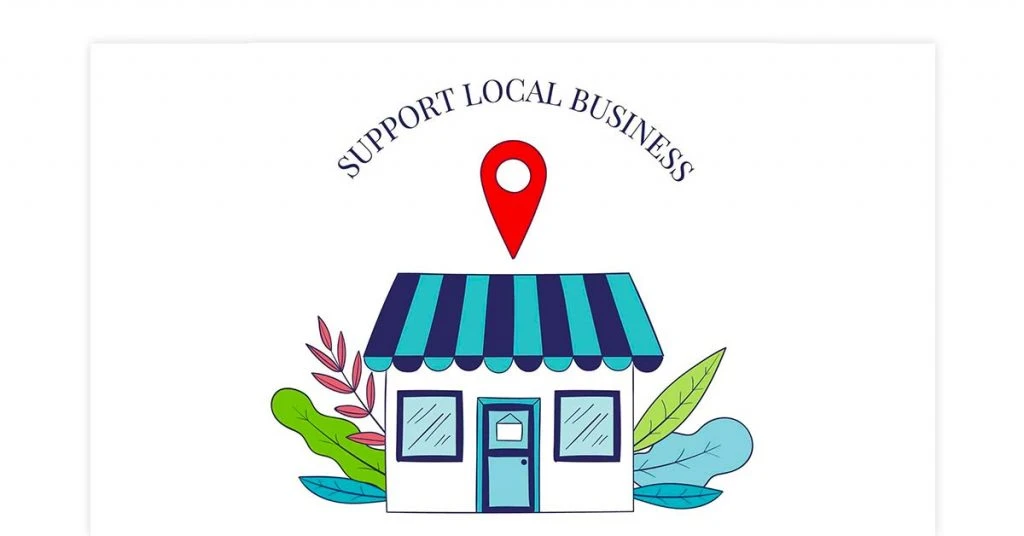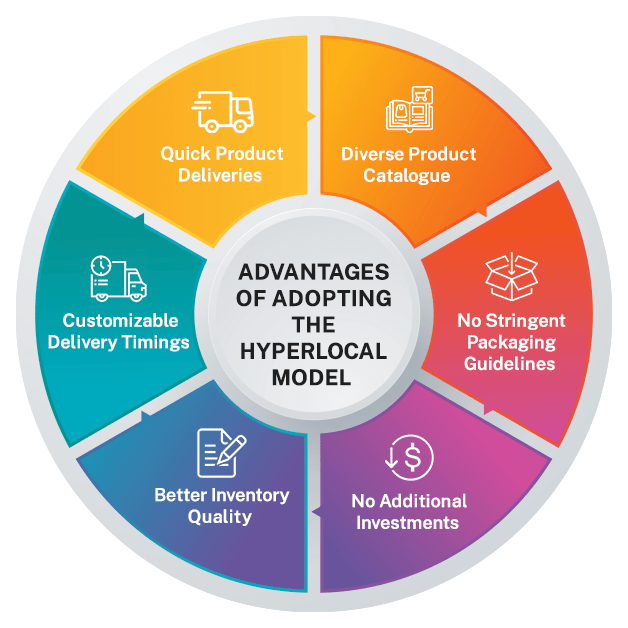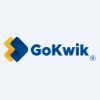How Is Hyperlocal Delivery Model Revolutionising the eCommerce Industry

Consumers today know their shopping choices and given an option they prefer to choose convenience above everything else. Sellers are aware of this market reality, and you will find many retailers investing in online delivery services.
Hyperlocal marketplace is the newest trend providing small businesses an opportunity to reach more customers online for selling goods & services. The business model is convenient for shoppers too as they can hop from one online store to another for buying their desired product.
What Is Hyperlocal Marketplace?
Hyperlocal marketplace is an online e-commerce platform dedicated to a specific geographical area catering to the shopping needs of local residents. Hyperlocal market business model provides an online multi-vendor marketplace for a small region or geographic area.
This marketplace allows business owners to register themselves on hyperlocal market ecommerce platforms/websites to sell products & services to residents in the vicinity.
Hyperlocal ecommerce business delivery systems are superfast and this is also the one factor that differentiates regular ecommerce portals from hyperlocal marketplaces.

Dukaan
Starting Price
₹ 299.00 excl. GST
With better technology services, higher internet connectivity and altering consumer behaviour, the hyperlocal marketplace is gaining more popularity. Hyperlocal eCommerce platforms include delivery service for grocery, food items, grooming services, house cleaning, etc.
How Does the Hyperlocal Delivery Model Work?
There are restaurants, grocery stores and such that do not have the facility of home delivery but hyperlocal marketplaces make this a reality.

Hyperlocal delivery platforms allow local businesses to reach out to the people around for selling goods and services. Their service ambit is usually confined to a few kilometres. The visibility is limited to the local people around. If a business offers exceptional service and quality, the selling increases always overall.
The hyperlocal delivery model works by following the elements and infrastructure available in the market locally. Currently, the hyperlocal e-commerce is available under the following two service types:

Shopaccino
Starting Price
₹ 30000.00 excl. GST
- Hyperlocal Delivery: This is done to deliver grocery items, home necessities, etc.
- Hyperlocal Services: This involves providing laundry, medical and logistics services.
Hyperlocal marketplace bridges the gap between existing local demands and available suppliers. The stores or the suppliers providing FMCG, food delivery, house maintenance, and personal grooming services need to deploy innovate mobile applications to start benefitting out of the model.
Challenges with Hyperlocal Business Model: How to Overcome Them
A hyperlocal business model isn’t free from the challenges of the times and some of these are:

1. Brick & mortar stores : People prefer buying stuff like fruits, vegetables and eatables from brick & mortar stores. They do not find online stores to be trustworthy enough for buying perishable products. Fleet management becomes an issue here as you invest resources to hire delivery staff for making quick deliveries but the demand isn’t that high.
But there are still a few customers that order online. In such a scenario, it is best to fix certain number of hours for making delivery of goods with low shelf life. This way you save revenue spent otherwise in maintaining the day-long delivery staff.
2. Stiff competition : The competition is stiff especially when there are big ecommerce sites collaborating with local businesses. Vendors too prefer these big brands leaving not much scope for newest or not so well-established hyperlocal business owners.
Hyperlocal ecommerce markets are a competitive place and hyperlocal businesses if they are to succeed need to ensure that their services are the best in class. They cannot afford to commit even unintentional errors to maintain their brand value.

DotcomPal
Starting Price
$ 39.00
3. Irregular operations
A hyperlocal business may receive orders at a uniform level throughout the year. But sometimes there is a sudden spike, for instance during festival seasons, etc. Making timely deliveries becomes a hassle hence. But on time deliveries are essential even during unpredictable peak hours to maintain your business reputation.
One solution to managing this could be hiring delivery staff beforehand during festivals on per delivery basis. This may incur some additional expense but your customers would never stop trusting you at least.4. Additional costs
Hyperlocal markets provide the desired visibility to customers for making online orders. However, for sellers this isn’t a treat exactly as they have to pay additional charges for enlisting their products in local marketplaces. It is particularly a challenge for newly emerging businesses.
A quick solution for new start-ups is to start by selling less to get a complete picture regarding the market demands and expectations. Start small and once your customers know you, start enlisting more products.

Rodeo Digital
Starting Price
₹ 30000.00 excl. GST
5. Extravagant marketing
Hyperlocal business means a well-functioning customer friendly website. This would require enough creative thought and investment on your part. Making extravagant expenditures on marketing activities would make your business suffer.
It is therefore recommended to control the amount of venture capital expenses and invest more in planning a website with a friendly interface.
Opportunities for Hyperlocal Marketplace in India

Hyperlocal marketplaces are based on the fact that consumers can go that extra mile for saving time by paying a few extra bucks.
Customers today depend on these portals for their product and service needs. Many fresh players in the hyperlocal business have taken advantage of this trend and established their supremacy. There are many online platforms offering products and service directly at your doorstep.
The market exists for hyperlocal businesses, but it demands superior service quality and product trustworthiness. Customers need to trust your brand and once this dependability is established, your hyperlocal business would steadily grow.

BuildaBazaar
Starting Price
₹ 1000.00 excl. GST
Do your homework to make your hyperlocal business a success. To begin with, you may observe the trends around to see which products are high in demand.
Do your short research and survey to find out how well the hyperlocal services are doing around. All this would give a fair idea about the products and services that would reap good returns.
Suggested Read: How to Build a Successful Online Store
Advantages of Adopting Hyperlocal Model

The demand for online deliveries is increasing day by day, and no wonder local sellers are investing their resources in hyperlocal business model. Key benefits of investing in the hyperlocal business model are:
Quick product deliveries
Hyperlocal marketplaces provide businesses an opportunity to start selling online. You can sell your products online at a quicker pace and establish the presence in the local markets.
Diverse product catalogue
Hyperlocal marketplaces offer a versatile inventory of stock items because all local sellers are available under a single platform here. Locals can connect with them for their shopping needs. In case a product isn’t available at one store, there are always other stores selling the required product.

NectaCart
Starting Price
₹ 37439.75 excl. GST
No stringent packaging guidelines
The best part about these marketplaces is that there are no strict packaging guidelines as the products are packed only as per their load capacity and shipment type.
No additional investments
As the sellers sell online through listings on hyperlocal marketplaces, there is no need to spend resources in setting up a shop or facing stringent market competition.

Profitguru
Starting Price
$ 39.00
Better inventory quality
As a hyperlocal market is based on the shopping needs of local customers around, the inventory is always stocked with their preferred products. Customers don’t have to go beyond these markets to buy the desired goods.
Customizable delivery timings
Unlike big ecommerce platforms, hyperlocal markets allow consumers to select their preferred time band for delivery. This is one convenient module for people to plan their purchase and delivery.
Key Features of Hyperlocal Marketplace

Hyperlocal marketplaces provide businesses an opportunity to connect with the locals in the vicinity for their shopping needs. Here are the core features enabling the popularity of hyperlocal business model:
- Distance calculation
Hyperlocal marketplaces offer accurate distance calculation systems so that consumers can get details of the nearest store around just by typing the address.
- Inventory management
Hyperlocal marketplaces need to provide real-time location and inventory syncing so that customers can collect all details regarding the available stock items.
- Customer chats
Order mismatch is a reality and if there is customer chat system in place, shoppers can be assured that their grievances and wrong product delivery issues would be resolved.
- Delivery slot details
Hyperlocal marketplaces offer this convenient feature for the customers that could be used by customers for checking availability of delivery slots. This is an added convenience that helps customers book orders as per their time preferences.
- Multiple store checkout
Hyperlocal businesses make it possible for shoppers to place order from another store just in case a particular shop doesn’t have that product available.
- Vendor registrations
Vendors can enrol themselves as sellers in a hyperlocal business model. The administrator interface of these marketplaces has the authority to permit sellers to register themselves and create vendor profiles.
- Shipping management
Sellers are given the option of adding multiple shipping areas, editing, and deleting them in a hyperlocal marketplace. There is also available this option for auto fetching of the correct vendor location.
- Admin support
Admins in these marketplaces have the power to set multiple filtering options using criteria like zip code, country, distance, city, etc.
Suggested Read: Why is Order Management System Critical for Ecommerce?
What Are the Different Hyperlocal Delivery Business Models?
At present, there are four major types of hyperlocal business delivery models. These are:
- Single Store Model
This model involves big established shops that are now planning to expand their customer reach. These businesses hence decide to take advantage of hyperlocal on-demand delivery applications for enhancing the customer base. Some good examples include Dominos, BigBasket and HelloFresh.
- Store Pick Model
This is another popular model where a customer can place order online before picking it up from the selected store. Stores in this model give a specified time to their customer when they can come to pick the order. Examples include Walmart and Petco.
- Hybrid Model
Hybrid Model gives the convenience of selecting either of the two- home delivery or in-store pickup. Customers can choose the best option as per their preference.
- Aggregator Model
In an aggregator model, there is always a hyperlocal store serving as the mediator between customers and the product store. This model provides online stores an opportunity to reach new customers. Some good examples – Instacart and Zomato.
Last Mile Delivery Vs Hyperlocal Delivery Model: What’s the Difference?
Last mile delivery and hyperlocal delivery model, both models are based on one goal – Providing the best product delivery services. Yet there are some differences between the two. Let us have a look at them:
- Time consumption : The time consumed in making last-mile deliveries ranges between 12-14 hours. It could even be sixteen hours. But in the hyperlocal delivery model, the services are to be provided within 2-3 hours.
- Delivery responsibility: In the last-mile model, delivery remains the responsibility of the courier company. In the hyperlocal business model, delivery is the responsibility of the seller’s fleet or the delivery company employed by the seller.
- Delivery area : Last mile models cover an area of up to thirty kilometers. A lot depends also on the location of the transportation company. In hyperlocal marketplaces, this is restricted to a very small area, probably 5-15 KM.
- Weight restrictions :Last mile deliveries have no weight or volume restrictions, but the hyperlocal business model follows 10-12 KG weight restriction.
- Product selection :Product to be delivered can be of any type in last mile delivery system. However, in the hyperlocal delivery model, the product is limited to food items, medicines, tiffin services, and such.
Suggested Read: Best eCommerce Website Builders for Small Businesses [Free & Paid]
Rodeo Digital eCommerce Solution: How Is It Helping Hyperlocal Business?
Rodeo Digital eCommerce Solution is an all-in-one ecommerce platform supporting hyperlocal business communities in starting their ecommerce journey. But this is not all. The cloud hosted advanced technology provides a powerful business engine for collecting business critical data for accelerating the daily sales.

The user interface of Rodeo Digital mobile app is easy and this has given retailers a good platform to track and manage their presence with hyperlocal eCommerce.
Businesses also get access to a simple admin panel and no special training is required for using it. Plus, the customer services team is supportive and friendly.

There is a centralized system for tracking orders and the inventory status after every sale. Rodeo Ecommerce Solution also offers configurable permissions with industry standard security, a simplistic design along with a robust admin panel for shop management.
Conclusion
Manage effortlessly your online business and focus more on retaining customers with a hyperlocal business model. Rodeo all-in-one ecommerce solution could be a trusted partner in your online ecommerce journey to help you reap good benefits out of your investment.
FAQs
What type of businesses can opt for hyperlocal delivery model?
Businesses dealing with the sale of grocery items, medicines, and regular household items select this business model. Those supplying services like tiffin delivery, cleaning, etc. Are also to be found in hyperlocal marketplaces.
What is hyperlocal targeting?
Hyperlocal targeting is the process of targeting potential consumers in nearby local areas for optimizing the business to ‘near me’ search option.
What services can be delivered under the hyperlocal business model?
The different types of services that can be delivered under a hyperlocal business model are cleaning, grooming, tiffin boxes and more.
Related Categories: Ecommerce Website Builder | Web Hosting Solutions | Dropshipping Software | Order Management Software | Payment Gateway
Somya is one of the most experienced technical writers in the team who seems to be comfortable with all types of business technologies. She is a sensitive writer who ensures that businesses are able to find the right technologies through her writings. She would leave no stones unturned... Read more




























